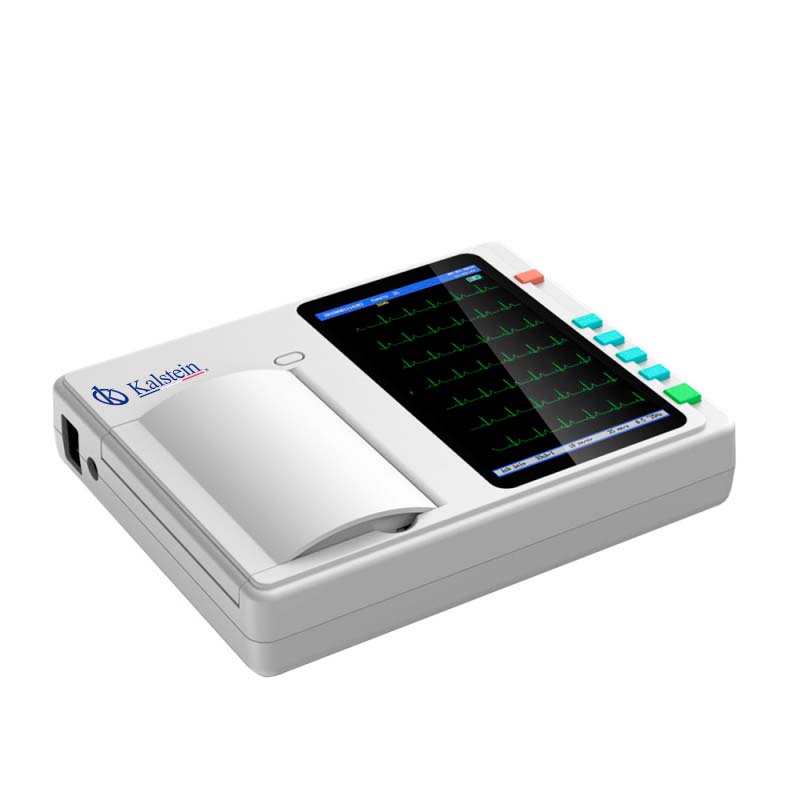Using a digital electrocardiograph (ECG) can significantly enhance a healthcare professional’s ability to diagnose and monitor heart conditions. In this detailed guide, we will explore how to use the Digital ECG from the medical line to achieve the best possible results.
Through practical advice and step-by-step tutorials, we will help you make the most of this advanced technology.
If you’re seeking a blend of innovation and quality, you’ve come to the right place. At https://kalstein.de/category-product/medical-line/ecg-digital-electrocardiograph/ we offer you the luxury to explore our exclusive catalog of laboratory equipment. We manufacture each piece of equipment with a level of excellence. Our intuitive and agile online shopping channels are designed for your convenience, ensuring the friendliest prices. Don’t hesitate any longer, we bring science to life, it’s time to become part of our community. https://kalstein.de/
Introduction to the Digital ECG from the Medical Line
The digital electrocardiograph is an essential tool in modern cardiology. This device allows for precise recording of the heart’s electrical activity, providing crucial data for diagnosing various heart conditions. In recent years, advancements in medical technology have led to the development of more accurate and user-friendly devices.
With the Digital ECG from the medical line, healthcare professionals can obtain more detailed and reliable readings. This technology not only improves diagnostic accuracy but also facilitates continuous patient monitoring, a growing trend in healthcare.
Initial Setup of the Digital ECG
Before starting to use the Digital ECG, it is crucial to configure the device correctly. The initial setup includes calibrating the device and ensuring that all components function properly.
To calibrate the ECG, follow the manufacturer’s instructions, which typically involve connecting the cables, adjusting sensitivity settings, and verifying test signals. Ensure the device is on a stable surface and that all electrodes are in good condition. This setup will ensure you obtain accurate readings from the start.
Electrode Placement: Step-by-Step
Correct electrode placement is fundamental for obtaining accurate readings. A common error is placing the electrodes incorrectly, which can lead to erroneous diagnoses.
First, clean the patient’s skin where the electrodes will be placed to remove any grease or dirt that could interfere with conductivity. Place the electrodes in standard positions: one on each arm, one on each leg, and six on the chest. Ensure the electrodes are firmly attached to the skin to avoid interference in the readings.
Performing the ECG Test: Practical Tips
Once the device is set up and the electrodes are placed, it is time to perform the test. Ask the patient to remain still and relaxed during the test to avoid artifacts in the reading. Start the recording and observe the ECG waves on the screen.
Ensure the tracing is clear and free of interference. If you notice any anomalies, check the electrode placement and device settings. Experience and practice will help you quickly identify any issues and take corrective action.
Interpreting the ECG Results
Interpreting ECG results requires specialized knowledge, but using a digital electrocardiograph can simplify this process. Most modern devices include software that helps analyze readings and identify potential abnormalities.
Review the P, QRS, and T waves and compare them with normal values. Pay attention to any irregularities, such as arrhythmias, heart blocks, or signs of ischemia. Use the analysis tools provided by the software to obtain a more precise and detailed evaluation of the patient’s cardiac activity.
Maintenance and Care of the Digital ECG
To ensure the longevity and optimal performance of the electrocardiograph, regular maintenance is important. Clean the electrodes and cables after each use to prevent residue buildup that could interfere with readings.
Perform regular system checks to ensure all components are functioning correctly. Refer to the user manual for specific maintenance guidelines and follow the manufacturer’s recommendations for calibration and software updates.
Conclusion: Enhancing Clinical Outcomes with Advanced Technology
The Digital ECG from the medical line represents a significant advancement in cardiology. Its precision and ease of use make it an indispensable tool for healthcare professionals. By following this detailed guide, you can use this device to achieve the best possible results, thereby improving clinical outcomes and patient care quality.
With the ongoing development of medical technology and recent advancements in laboratory research, it is crucial to stay updated and make the most of available tools. The Digital ECG is a key component in this landscape of innovation, and its proper use can make a significant difference in cardiovascular health care.

